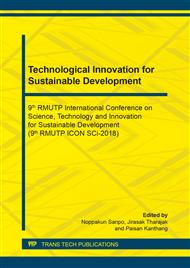p.214
p.219
p.224
p.230
p.239
p.246
p.253
p.263
p.269
Impacts of Current and Voltage Harmonics for Industrial Power Network
Abstract:
Power quality (PQ) has become a more important issue recently due to the use of more sophisticated and sensitive equipment. Medical devices, telecommunication servers and equipment, manufacturing and domestic appliances rely on a good supply of power. This paper presents the review of the power quality in power system. Power quality has always been important for customers, but with increasing applications of electronic loads and controllers sensitive to the power quality, the subject has attracted renewed interest in recent times. Power quality encompasses several aspects: harmonics, over voltage, flicker voltage sags and swells interruptions etc. A major factor contributing to the importance of the quality of power is the deregulation of the power industry. Customers will demand higher levels of power quality to ensure the proper and continued operation of sensitive equipment and processes.
Info:
Periodical:
Pages:
239-245
Citation:
Online since:
May 2019
Authors:
Keywords:
Price:
Сopyright:
© 2019 Trans Tech Publications Ltd. All Rights Reserved
Share:
Citation:


